A JVC D-ILA projector is the heart of my home theater. When it started acting flaky on me recently and seemed possibly on the verge of failure, a giant knot formed in the pit of my stomach. After doing some research, I decided to attempt the daunting task of repairing it myself.
The Problem
Let’s start with some background. I have two projectors in my home theater. I use a Sharp DLP model for 3D and (more importantly) for general TV viewing, which means that it gets the bulk of my use. However, I still consider my JVC DLA-RS40 to be my reference projector, reserved exclusively for 2D Blu-ray viewing. Although it’s a 2011 model and no longer state-of-the-art, when everything is working it still puts out a hell of an impressive picture.
Unfortunately, not long after I purchased it, I and many other RS40 owners ran into a serious problem with premature lamp failure. I wrote in 2012 about how my first lamp died after just 507 hours of use, barely 1/6th of its rated lifespan. My second lamp lasted about 1,000 hours, which was an improvement but still well short of expectations. Considering that replacement lamps cost around $400 each, this was truly unacceptable.
At the time, these issues were believed to be the fault of a design defect in the lamps. JVC eventually revised the lamp housing to include a flapper that would push more airflow toward the lamp, hopefully to prevent overheating. Some users reported better results after this. My third lamp had the flapper and seemed pretty stable, but I’d also been using this projector a lot less by that point and hadn’t put as many hours on it. Over time, I became complacent and stopped worrying about the projector, assuming that this third lamp was the fix I needed and that I’d get a good, long life out of it.
Seemingly unrelated to this, the front IR sensor on the projector stopped working. This meant that it wouldn’t receive commands from the remote control unless I aimed it to bounce the signal off the back wall of my room, so that the rear IR sensor could pick it up. Again, this seemed to be a very common problem among other owners. I considered this a minor nuisance and didn’t give it much thought.
Of more concern were periodic HDMI lock-ups, where the projector would blank out its image and refuse to respond to any commands, either from the remote or the physical buttons on its back panel. When this happened, my only resort was to unplug the projector, forcing it to turn off without a proper cool-down cycle. Doing so is very hard on the lamp and may contribute to early failure.
To the best of my knowledge, all of these issues were isolated to JVC’s 2011 models. As far as I’m aware, later product generations were unaffected, which suggests that JVC discovered the fault and fixed it, leaving owners of 2011 line in the lurch.
In any case, all seemed well until a couple months ago. My lamp was plenty bright and HDMI lock-ups were rare. Then, one night after a few hours of movie watching, the projector’s picture started to flicker. My heart dropped. I recognized this as the first sign of impending lamp failure. I checked the lamp counter and found that the bulb had barely over 600 hours on it. I immediately powered down the projector, hoping that this was a one-time overheating issue and wouldn’t recur. Sadly, the same thing happened again during my next few viewing sessions. The flickering never started right away, only after two to three hours of use, so I tried to keep my viewing shorter than that. This was not a long-term solution and I knew that I’d have to get it fixed, but I didn’t relish the prospect of shelling out another $400 for a fourth lamp.
Considering that this happened right on the heels of my Sharp projector also acting up, I felt like my home theater was dying on me, one piece at a time.
An Unexpected Cause
After my JVC problems started, I headed over to AVSForum to see if other users had similar experiences with the supposedly corrected lamp model. Digging through the Official JVC RS40/X3 Owners Thread, I learned that a very surprising discovery had been made during the time when I wasn’t actively following the conversation there. Starting in post #10075, member rprade reported that he found a capacitor on the projector’s front IR/LED board installed backwards. In his words: “The stripe on the capacitor which denotes the + end is connected to the ground side of the board. It should be mounted the other way. A capacitor will not work when installed backwards, but it takes some time before it will fail. When it fails it will usually short or get very low resistance.”
The following is his photo, posted to the AVSForum thread:
Sure enough, other owners opened their projectors and found the same thing, leading to the conclusion that this was a widespread manufacturing error with this model. The main purpose of the affected board is to accept remote control commands, which would explain the projector’s dead IR sensor. While that sounds like a minor fault, a short on this board could cause electrical surges that might affect other parts of the projector, including the lamp.
Following rprade’s lead, several other members then claimed that removing the capacitor and replacing it in the correct orientation resolved their lamp flicker and HDMI lock-up problems. This seemed like a miracle cure, almost too good to be true. Could something so seemingly insignificant really be the source of all my angst? Could I fix it myself? I had to try.
Performing the Surgery
Affecting this repair requires some skill at soldering, of which I have little to none. I also get nervous about taking apart my expensive electronic toys. As such, I asked an engineer friend of mine for help, and he was very gracious enough to lend me some of his time.
First, we had to dismount the projector from the ceiling, then unscrew and detach the front panel.
As promised, there’s the culprit with the capacitor installed backwards.
After some finessing with a soldering iron and tweezers, we got the little bugger out.
Can you believe that something so small could cause so many problems?
Rather than simply replace the same (potentially degraded) component, as others had done, I decided to err on the side of caution and purchased a new 47uf 25V surface mount capacitor. This was a very minimal expense that made me feel a little better about this procedure.
Next, we soldered it into place, in the correct orientation this time.
With that done, we just had to put the projector back together and mount it back on the ceiling. The mounting was an ordeal in itself, because it meant realigning the image on my screen, which takes a lot of painstaking effort. Nevertheless, that was the part I felt comfortable doing myself.
Did It Work?
With the new capacitor in place, the projector’s front IR sensor immediately started working again. This was a good sign, but I wouldn’t know for certain whether the other problems were resolved until I put some more hours on the lamp. The flickering usually didn’t start until after a couple hours of use.
Over the last several weeks, I’ve watched a bunch of movies and run the projector a fair amount, usually in three- to four-hour sessions. Since flipping the capacitor, I have not experienced any more lamp flickering. This is a huge relief.
I have run into one HDMI lock-up, though it only came after a lot of flipping back and forth between two HDMI inputs while I was trying to do a video comparison of two discs. At a certain point, I got stuck with no image on screen and the projector was unresponsive to commands from the remote. However, simply disconnecting and reconnecting the HDMI cable from the back of the projector immediately resolved this and it worked normally after that point. In the past, I was basically screwed when HDMI lock-ups happened, and my only resort was to unplug the projector without a proper cool-down. That was not the case this time. This is a big improvement and I can deal with it.
I’m hopeful that the worst of my problems are behind me and the projector will behave better from now on. It’s a great display when it’s working right.

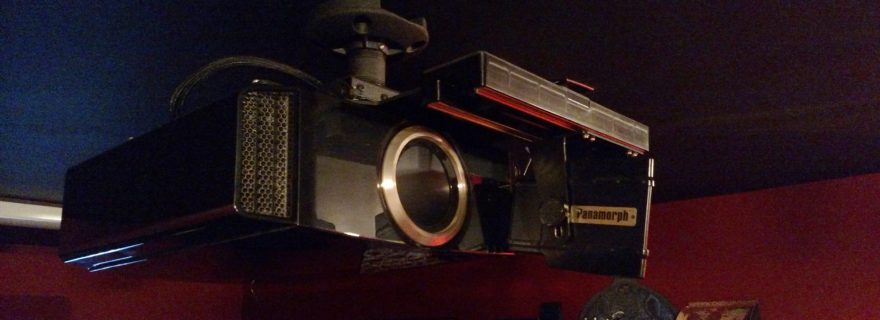
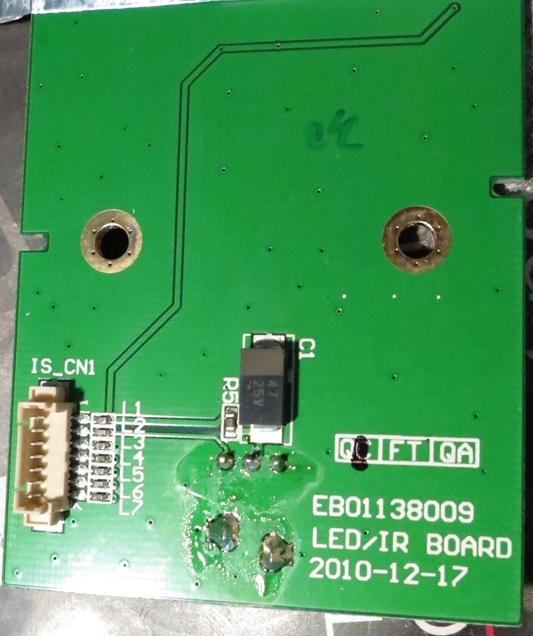
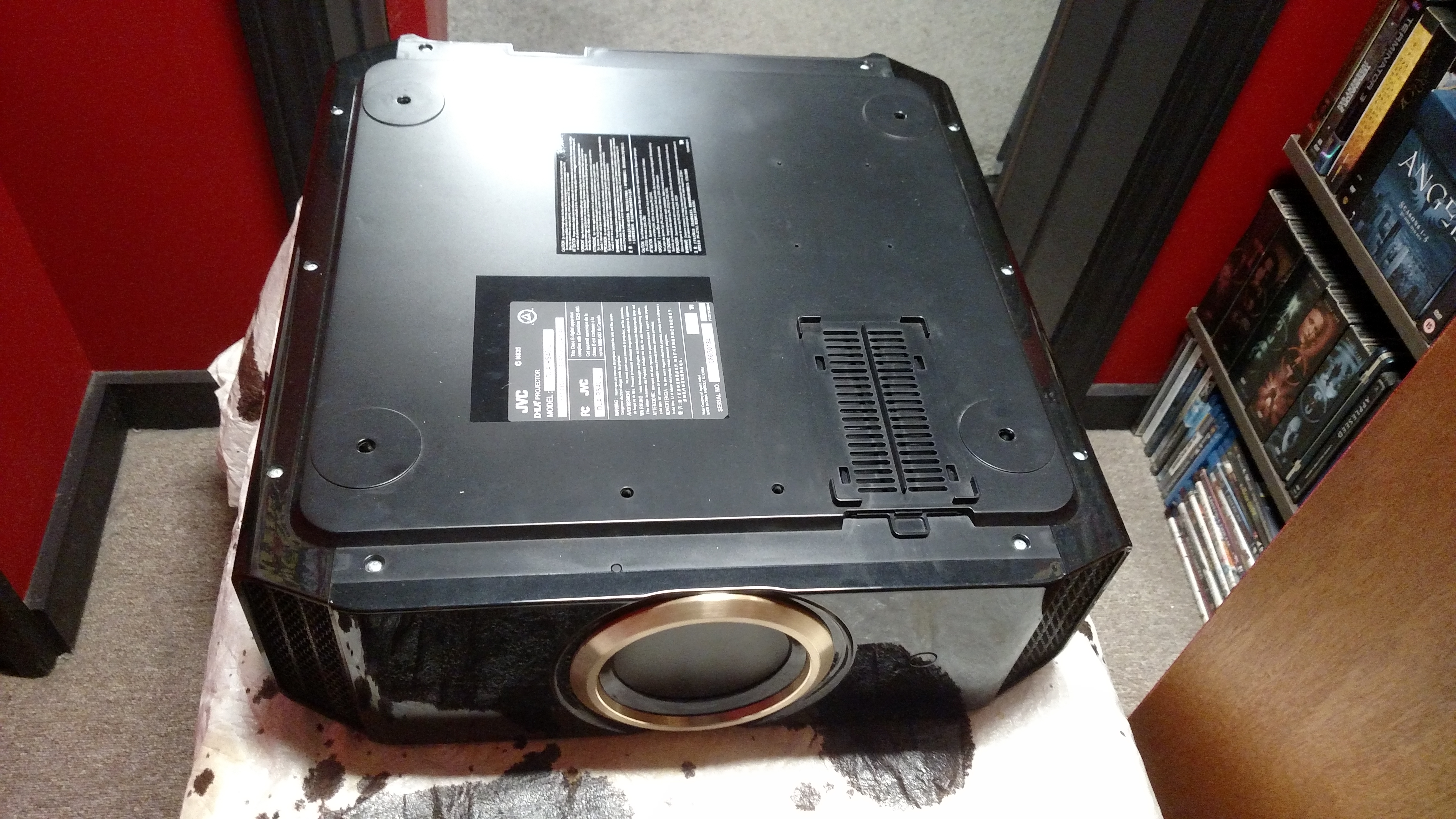
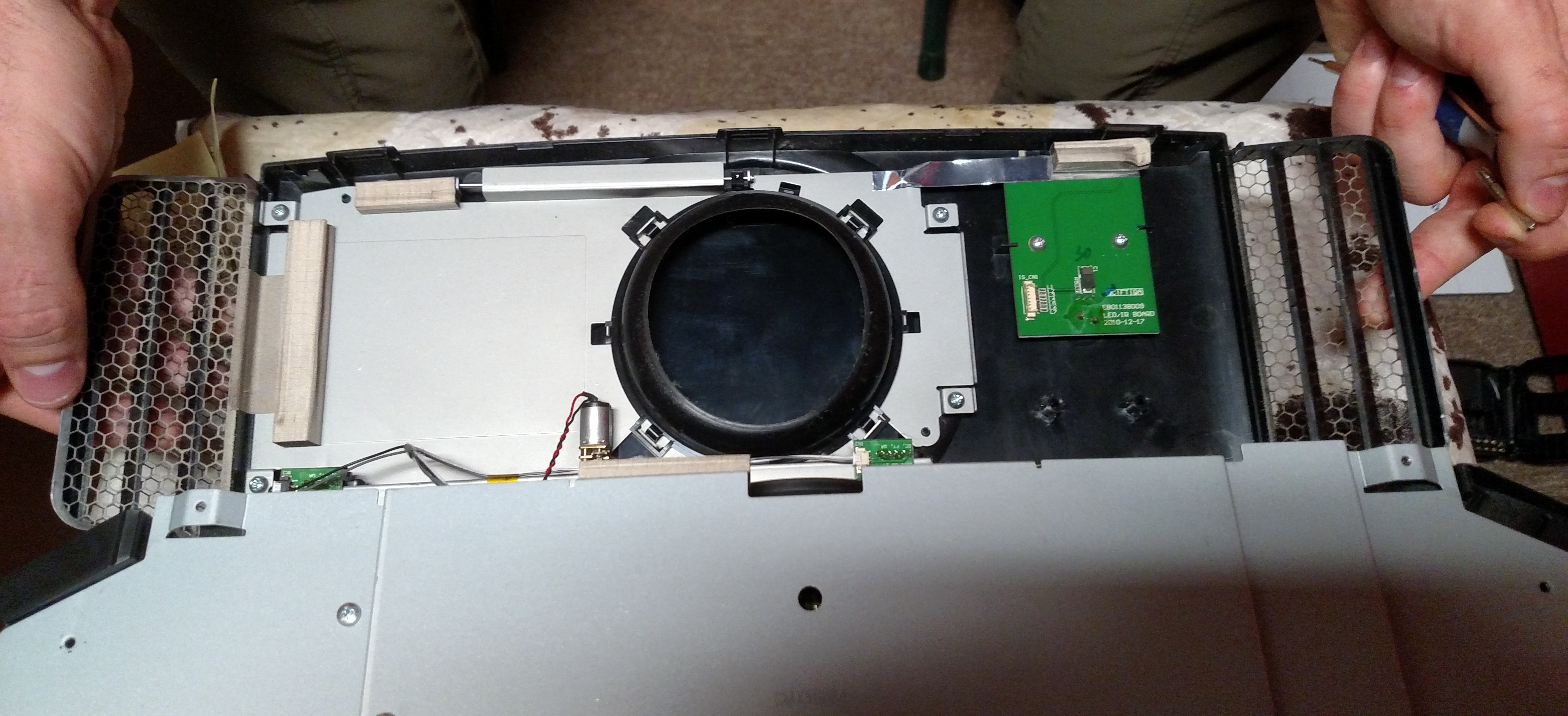
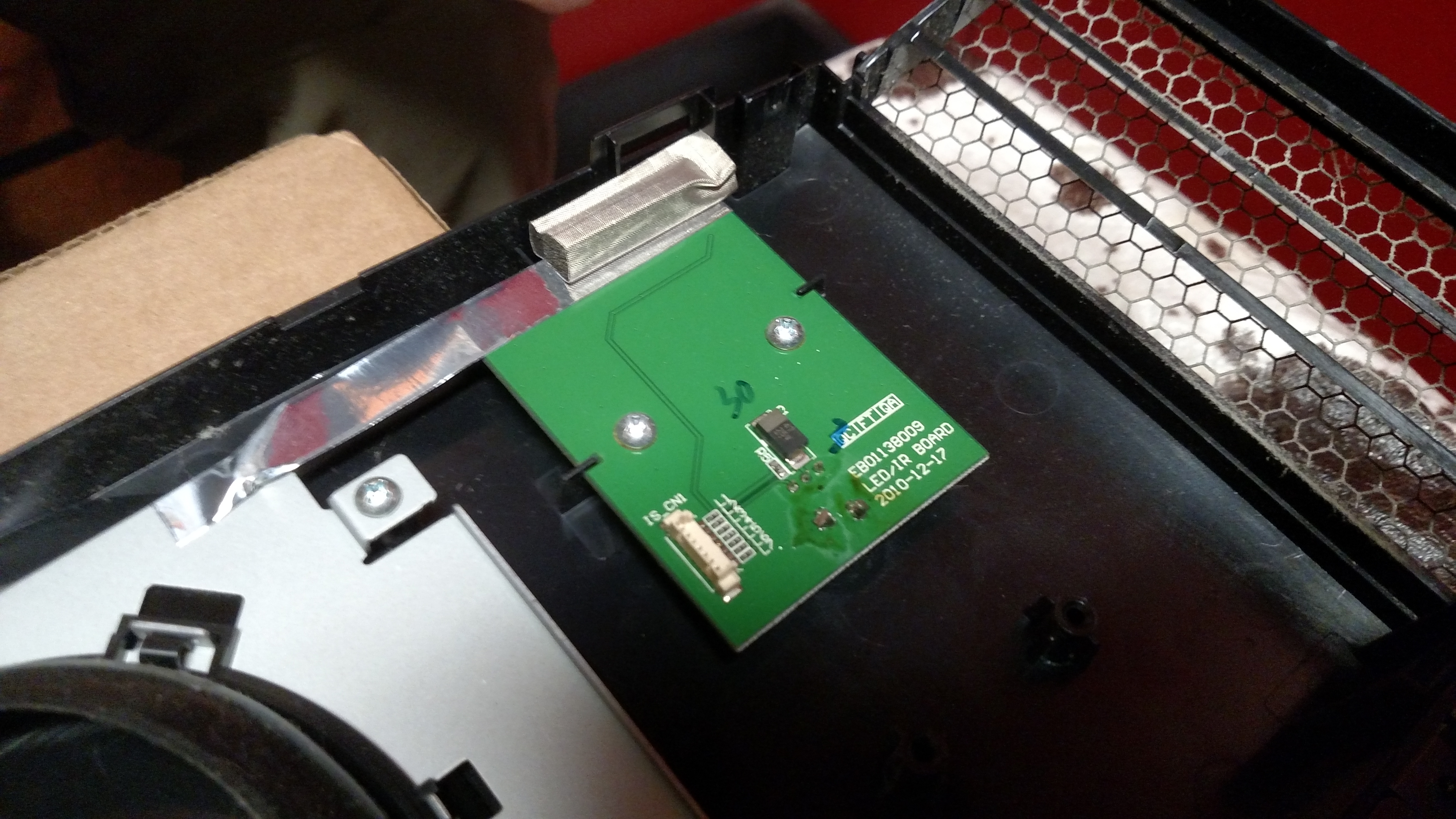
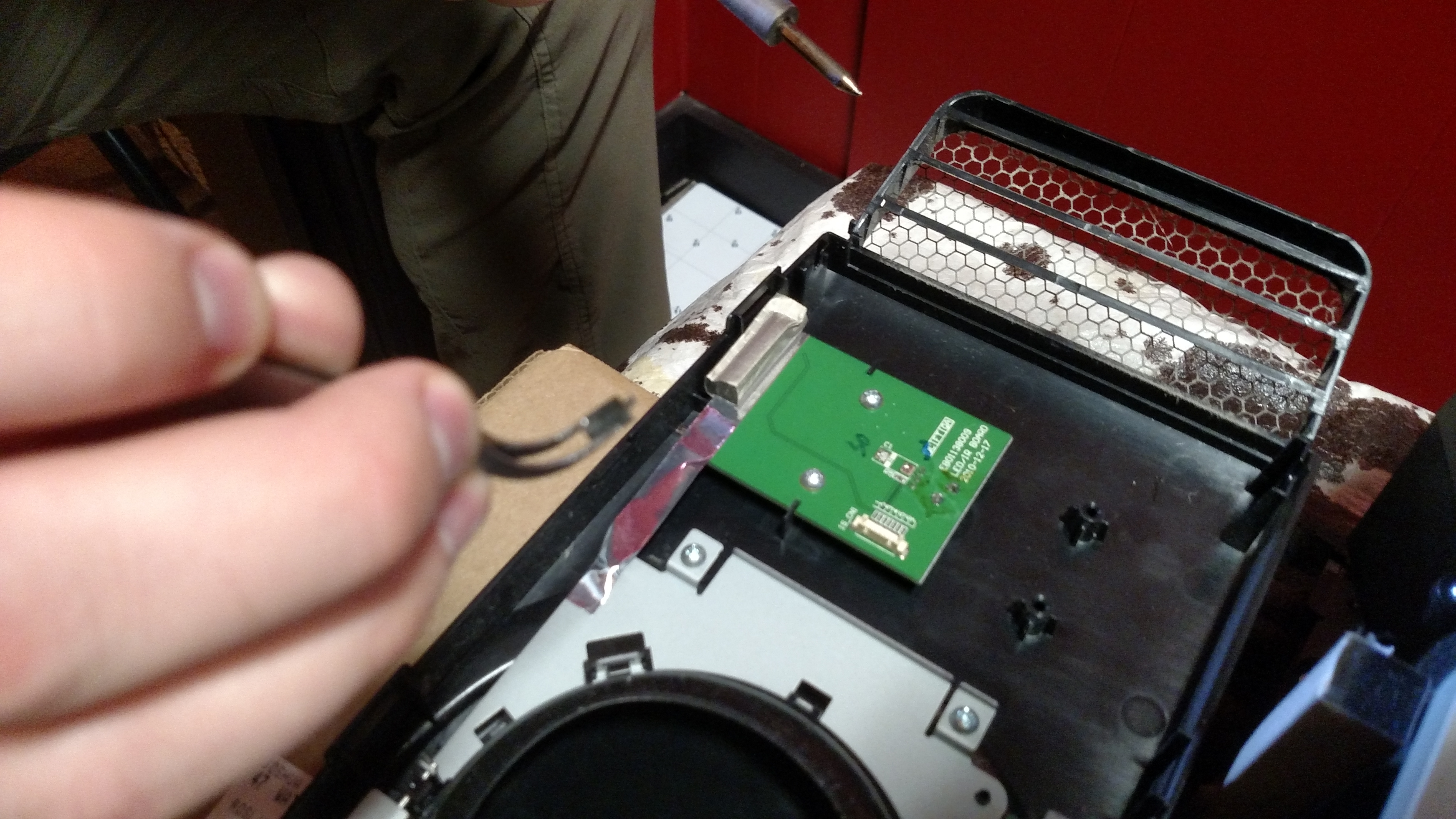
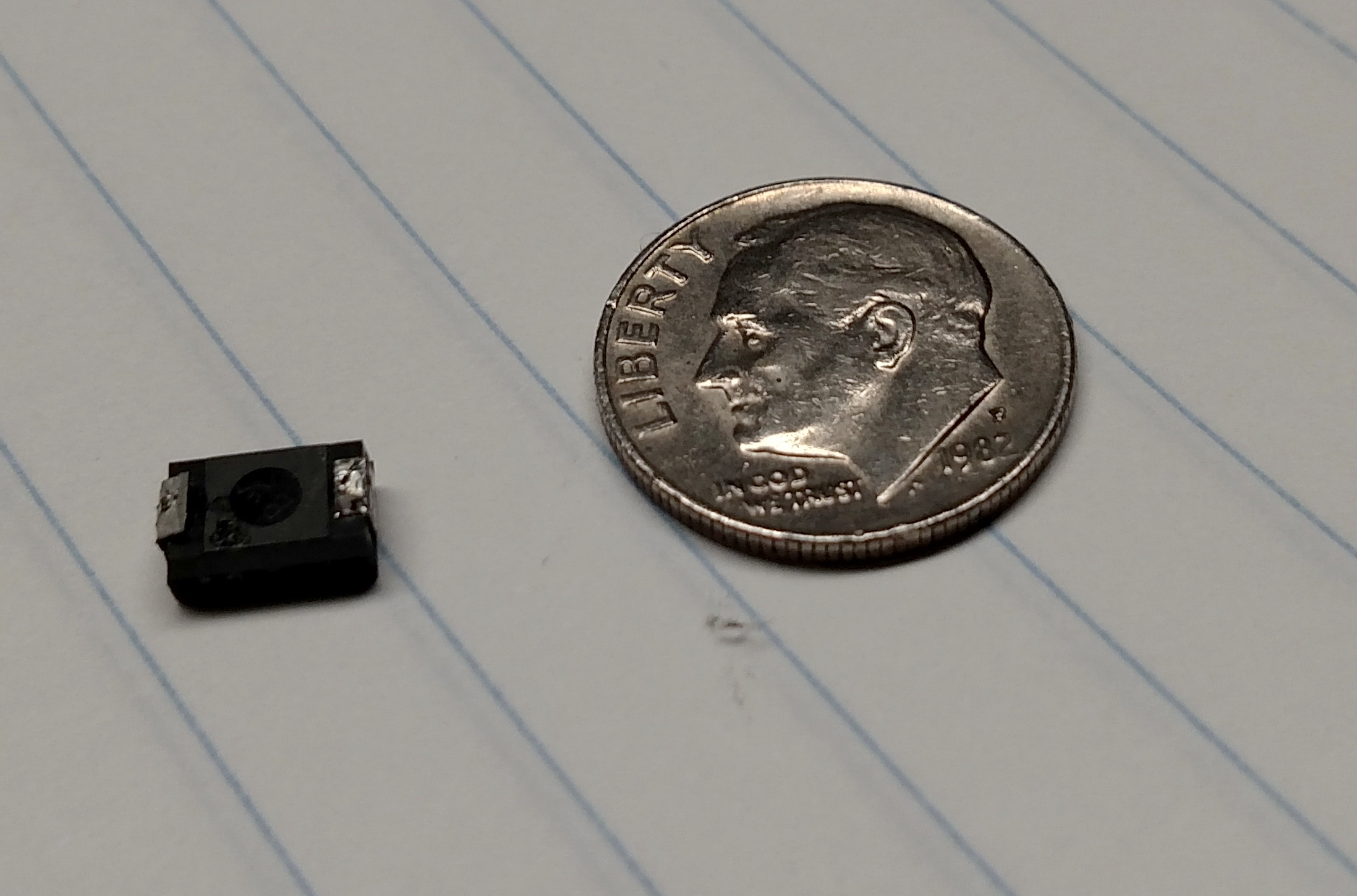
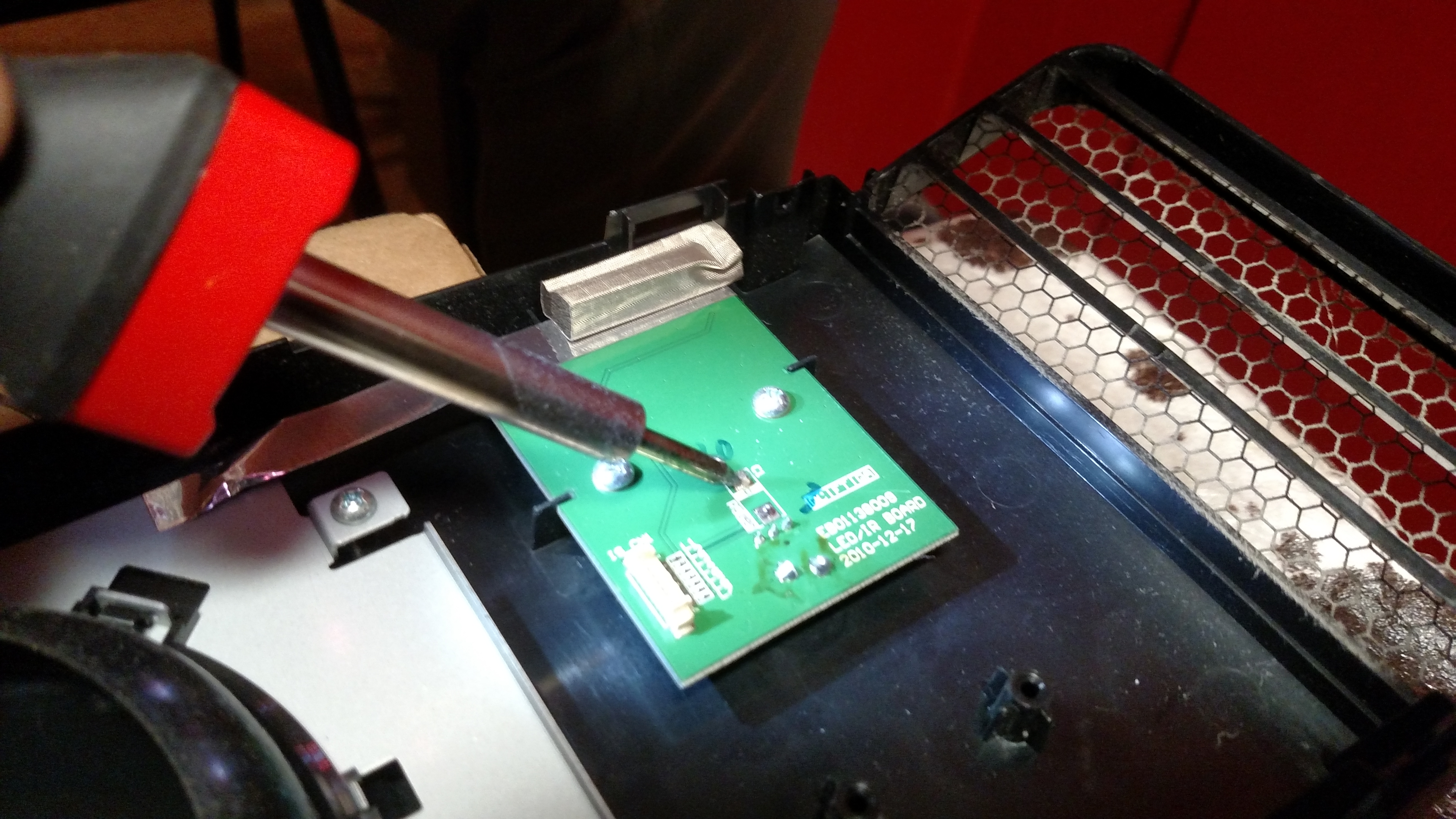

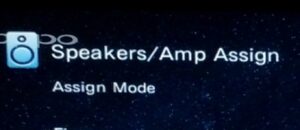
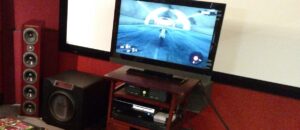
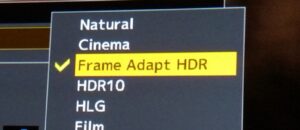
Csm101
Have you contacted JVC about this total blunder on their behalf? Would they refuse to comp you for any losses because you took it upon yourself to fix the problem? I think they definitely should provide you with free replacement lamps and or a big discount if you ever choose to buy another one of their projectors again. That goes for anyone who suffered these problems with this model.
Josh Zyber
AuthorUnfortunately, JVC never officially acknowledged that these units had a problem. I doubt they will do so now.
Ross
My old projector starting flickering after 2000 hours. I only had the projector for 1.5 years, it was my primary display so I rack up hours quickly. It was my 3rd and final projector. I can’t stand the maintenance and investment.
Josh Zyber
AuthorHow long was the bulb rated for? Did you use it in regular or High Lamp mode? 2,000 hours is not unreasonable for many projectors, though I understand the frustration with the maintenance and investment.
Ross
It was rated for 5000 hours in Eco mode and 4000 in regular mode. I pretty much only used in its THX mode so I figured I would get at least 4000 hours. I really noticed how dim the image became after 2000 hours. So much so that I could no longer use the settings from the calibration I performed with Calman and my X-rite meter. It had a very apparent green push in the greyscale so reducing green of course made the picture less bright. The flickering became quite bad. In the end I’m MUCH happier with my new 65″ panel. Out of the box dE is below 2. It’s very accurate and looks beautiful in 1080p and 2160p. I was reluctant thinking I would miss the size but the panel handily beats the projector in quality. Projectors are great but the maintenance was a deal breaker.
Josh Zyber
AuthorI can understand your feelings after that experience. No denying, flat panels are certainly easier.
Still, a scope move on a 65″ screen is only 24″ tall. I just couldn’t go back to that, personally.
Ross
Yeah my friends and family didn’t understand how I could either. It was my 3rd projector. I wanted to upgrade to 4k and overall prefer panels. I don’t have a tv in my living room so my theatre room is where all my viewing takes place and my only option was to watch in the dark, also not practical for me.
Hopefully your fix lasts.
Plissken99
Wow.. I had the RS40, went through all the same headaches with the bulbs. No HDMI lockups thankfully. The flapper bulb didn’t help me either, it was this projector that made me dump JVC for Sony one generation. I was going through a bulb every 2 months since I watched everything on it, I had to sell at a huge loss before the warranty/free replacements ran out. JVC were very shitty about it too, had to explain the bulb problem and get a supervisor on the phone every time it happened.
Bulb issues or not I missed JVC badly in that time. Since the Sony I’ve had the RS400 and now the RS420, the former’s bulb lasted 2700 hours and likely more as I upgraded before it went out.
I’m amazed there is a fix for it now, congratulations! Gotta love AVS!
Mauricio
Great article, thanks!, the JVC DLA are the real “movie machines” with the best black levels in home cinema projection….
Krawk
Thanks for reminding me why I DON’T have a projector. Sounds expensive to maintain but glad to see such a DOH moment was caught by another enthusiast. Did your engineer friend get a chuckle out of that issue? Anyway – With the known issues of the JVC, has there no consumer recourse against the manufacturer?
Pedram
One person’s problems with a specific model is not a reason not to have a projector. What if it was a problem with a TV? I’ve had projectors for almost 10 years, and never want to go back to just having a TV (and have also never had any problems with them). I have a TV as a backup for daytime viewing, and for 4k content until 4k projection tech stabilizes and comes down in price, but most of my serious movie watching is on my projector. Once you see something on a 120″ screen, it’s hard to go back. I don’t really consider a home theatre a “theatre” unless it has at least an 80″ screen, which most people’s TVs don’t come close to.
It sucks that Josh had so many problems, but I don’t think it’s that common, and certainly not a reason to avoid projectors.
Plissken99
The RS40 is one of a half dozen digital projectors I’ve been through, and the only one with so many issues. Using this one example to not have a projector is invalid. It’s one black mark on JVC’s otherwise exceptional line of projectors.
Beefeater
Thanks for posting this. My RS40 has had a flakey IR for years, but it never bothered me much. I thought it wouldn’t be very fun to take it apart, but it doesn’t look bad at all. That said, the new Optoma UHD65 4k looks amazing. Might be where I head next.
Julian
‘Can you believe that something so small could cause so many problems?’
(Doc Brown, ‘Back to the Future III’, almost word-for-word 🙂 )
Scott
Nice. Way to go Josh.
William Henley
I have a bad feeling that by the time it gets time to replace my bulb, i will have to replace the projector. The bulb is rated for 5,000+ hours. I have had the projector for almost two years, and have about 1800 hours on the bulb. The model was a 2015 model, and people are already complaining its hard to find an OEM bulb for it. But if the bulb ends up lasting anywhere remotely close to 5,000 hours, it will probably be time to upgrade to a 4k projector anyways
Vance
Your article was a life-saver. Solved the issue with my RS40 perfectly. Thanks so much for writing it up!
Grant Carter
Hi Josh
I love your reviews and articles on your home theatre journey. Thankyou!
I too have a 2011 RS40 (one of the few examples in Australia, the X3 being the dealer supplied brand here).
My first bulb exploded at 700hrs. I can’t remember when the front IR sensor stopped working but it was around this time.
I had a ballast board fail and replaced a bit over a year ago after my first “red flashing light of death”.
The RS40 worked OK following this, but still had the occasional HDMI lockup, and failure to power down correctly. Recently the next lamp started dimming at around 800 hrs. Inspecting the lamp, you could see it had “drooped” in the reflector from overheating. So in went yet another new lamp. Sigh….
6 months ago we upgraded an elderly Yamaha V4600 with a shiny new Atmos enabled A3070. But after this, the RS40 starting having more HDMI lockups, which seemed to occur after switching between the Oppo 93 and set top box.
Finally, just a week ago, the RS40 locked up one last time, and on power up showed “red flashing light of death” (abnormal electrical circuit) and has not worked since.
Cutting to the chase, I then went out and bought an X5900. Its a nice machine although I actually think the RS40 has a marginally better black floor. The X5900 however shows pristine 3D (no crosstalk) and of course 4k/HDR emulation which is a compelling improvement over SDR. And 100+” of JVC goodness was only $500 more than a 65″ OLED (BTW we’ve still got a Panasonic V10 Plasma with a black level restoration chip as our main HDTV, and still going strong).
I’ll now get the RS40 repaired and have sent your very useful information to my repairer. I have no doubt that the reverse polarity capacitor has been causing a lot of trouble. If successful, I’ll keep the RS40 as a backup (and permanently retire our aged backup Panasonic AE700 still remarkably on its first lamp).
Thanks again for this very useful information.
Kevin Martin
Thank you so for the blog and the references
sue west
I have a JVC X3 with 1500 hrs on original bulb.
My front sensor stopped working and now after a while the picture starts to fliker.
Recon this might be the same problem with mine?
Josh Zyber
AuthorIt should definitely fix the sensor. I cannot guarantee it will fix the flicker, but that may be related and it is worth doing.
Unfortunately, my RS40 died after writing this article due to a ballast failure. This generation of JVC projectors had a lot of issues.
Joseph Damato
Hi Josh – I have a lamp flickering issue with my JVC DLA-X500R (circa 2015) unit. This just recently started during only my second lamp which currently has only 500 hours on it. Do you think this might be related to the issue you had, or can provide any advice on how to begin figuring out the root-cause? You seem knowledgeable and I would be grateful for any help.
Josh Zyber
AuthorI don’t think it’s the same cause. The flipped chip issue was specific to the RS40 generation. I believe it was determined that an engineer had drawn that circuit backwards in the schematics, and manufacturing followed that instruction unknowingly. The problem was corrected in subsequent JVC projectors.
My best guess is that what you’re experiencing may be due to a faulty lamp.
Mike J
I was ready for something much more expensive involving shipping etc… Thanks for the instruction on such simple fix. I’m not all that technical, removing a few screws and heating a bit of solder brought new life to my DLA-RSA40-U!
getgray
Wow Josh. Someone gave me a 4910 because it was flickering. Hoping this is the fix! Thanks very much for the write-up.
getgray
Alas, mine was built correctly, so some other cause for flickering 🙁
Jon
interesting information and a good read. It’s shame these devices have issues like this when they cost so much to buy. I have a JVC DLA-HD950 (Australia model) and after 300 hours the black start up screen turned red, if I change the background screen to blue it shows purple, I have no idea what the issue is, it happen after the warranty had expired and an email to JVC they suggested it may cost $4,000 to repair and suggest I just buy a new projector (like buying candy…) it’s still works, some images have a red thing (hard to explain) but it’s not right and I can’t find any information to tell what the issue is.
Cliff
Hi folks,
I found this article as I searched the web for my flickering issue with my JVC RS4910. I removed the front cover however, my Capacitor appears to be mounted correctly. I am wondering what the likelihood is that this Capacitor could be degrading and causing this flicker issue. I have replaced the lamp already yet the flickering issue remains, granted I bought a cheap non-JVC lamp on Amazon, as I am afraid to invest $500 dollars in an OEM JVC Lamp if the flickering issue will require more and more money to diagnose. I understand that buying a genuine PK-L2312UG would be ideal… but not sure I want to risk another $500 on this older JVC Projector.
Any comments or suggestions would be much appreciated!
Sincerely,
Cliff
Cliff
Update:
After some research I have learn that Tantalum Capacitors (that’s what JVC uses) are super reliable, HOWEVER, flipping the chip around is NOT recommended as the reverse orientation can severely degrade their function and lead to eventual failure, which can cause problem with downstream components. The Tantalum Capacitor must be replaced if you find you have a unit with the Capacitor originally mounted in reverse.
Additionally, my flickering issue appears to have resolved itself. I can only assume that the cheap Lamp needed some break-in time and now appears to be working fine. I did however order a better OEM Lamp and will install it at a later date when my cheap bulb begins to degrade.
JERRY LAMAR GRIFFITH
I need your help to know how to determine the installed orientation of the Capacitor on the LED/IR Board? I do good bit of electronics parts replacements like keyboards on laptop PC, control panel on my oven, ice maker, pool heat pump, pool control panel, irrigation controller. etc. by using photo for wiring and replace the defective part back like the one removed. I have ordered a new F931E476KNC KYOCERA AVX Tantalum Capacitor which will be here tomorrow. I have a 2011model JVC DLA-RS40U that in past year is giving me fits with locking up. It has gotten so bad it even hangs on DILA Logo screen from a cold start up after sitting idle over night. Interestingly I can unplug it for brief period and it will display DILA and continue on normally. Or sometimes after being on for a while I can’t even turn it off by pressing Standby twice. When it was operating normal I could turn off the AV source, get a blue screen then press the Standby couple of times and it goes off. Recently I have noticed some flickering after couple of hours and its been giving me a blank screen when the AV source is turned off and it is unresponsive to any button pushes on the JVC remote. I have to unplug it for a while. I cleaned the filter thinking it was a heating problem. I even open my window in the theater room to let in some cold winter air in thinking that would help and it does sometimes. I am good at soldering in parts like they come out but I am not comfortable determining the polarity of the Capacitor. The help i need is some way I can determine the correct polarity.
Josh Z
Unfortunately, the RS40 died altogether on me a few years ago and went off to e-waste recycling. Other than what I documented in the text and photos on this page, I don’t recall any other specifics of how to orient the capacitor.